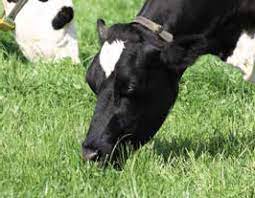Effective Low-Cost Management of Temperate Forage Grasses to Improve Livestock Production (Milk and Meat) During Winter and Early Spring Seasons
Planted pastures can be defined as plants that are established to replace the existing vegetation with the aim of improving the production and quality of forage for livestock. The following reasons are for the use of planted pastures: to improve performance per animal unit, carrying capacity of the farm, the profitability of the livestock enterprise, calving or lambing/kidding percentages, and improve animal grades.
To increase animal production per hector and the tempo of animal production. To Flush or steam up ewes. To provide for early mating of animals and flexibility of the animal enterprise (s). To relieve the grazing pressure on the veld. To improve the fodder flow programme. To reduce the amount of conserved feed (silage and hay) made.
Selecting pasture species depends on the following factors, the environment, the purpose for which the pasture is required, the type of animal to utilise the pasture, the yield and quality required from the pasture, the time of the year when the pasture is to be utilised and the number of years for which the pasture is required.
All the photos/pictures in this article were captured or taken at Cedara ARC research centre in Kwa-Zulu Natal, South Africa under evaluation of forage species. Annually different seeds companies submit their new cultivars or lines both released and not released to the market for agronomic evaluation.
The agronomic performance data of the submitted cultivars/varieties/lines shared to seeds companies annualy. ARC share a 12 month old data to farmers, communities and public in a form of presentations during open days, farmer’s days and workshops. The management discussed below is the same management applied at Cedara ARC research centre.
Lolium multiflorum: Annual ryegrass (Westerwolds and Italians)

Irrigation/rainfall: Irrigation required (20 to 25 mm per week).
Soils: most soils of high fertility (soil analyses is recommended before planting).
Fertilization: High fertility requirement- especially Nitrogen (N). Top-dress after each grazing is recommend (300 to 550 kg N per season).
Planting: Establishment- autumn: February to March. Sowing rate 20 to 30 kg seed per ha.
Utilization/Grazing: allow grazing/cut when the plants reach three leave stage and remove them when grass are 10 cm height to allow rapid regrowth. Foggage: poor, Silage: Fair, hay poor
Lulium perenne: Perennial ryegrass

Irrigation/rainfall: Irrigation required (20 to 25 mm per week).
Soils: most soils of high fertility (soil analyses is recommended before planting).
Fertilization: High fertility requirement- especially Nitrogen (N). Top-dress after each grazing is recommend (300 to 550 kg N per season).
Planting: Establishment- autumn: February to March or September to October. Sowing rate 20 to 30 kg seed per ha.
Growth: Autumn and spring growth. Little production during summer. Decline production after the first year- longevity problem. Perennial ryegrass can last for 6 years if properly managed.
Utilization/Grazing: allow grazing/cut when the plants reach three leave stage and remove them when grass are 10 cm height to allow rapid regrowth. Foggage: poor, Silage: Fair, hay poor
Festuca arundinacea: Tall Fescue

Irrigation/rainfall: Suitable for dryland (Above 800 mm). More drought tolerate than ryegrass. Most heat tolerant of the temperate species.
Soils: suited to most soils (soil analyses is recommended before planting).
Fertilization: High fertility requirement- especially Nitrogen (N). Do not apply nitrogen in summer, only in autumn and early spring. Top-dress after each grazing is recommend (300 to 550 kg N per season).
Planting: Establishment- autumn: March- May. Sowing rate 20 to 25 kg seed per ha. Slow to establish therefore seedbed preparation is important.
Growth: Most productive during autumn and spring. Limited summer production. A full seed rest should be allowed every third year. After such a rest, the pasture must be mown and baled.
Utilization/Grazing: allow grazing/cut when the plants reach four leave stage and remove them when grass are 12 cm height to allow rapid regrowth. Rest in autumn and allow foggage build-up.
Foggage: Excellent, Silage: Fair, hay: Good
Oats, Stooling rye and triticale
Avena sativa: Oats
Secale cereal: Stooling rye
Triticum spp: Triticale

Irrigation/rainfall: Suitable for dryland (Above 800 mm). For dryland.
Soils: well drained fertile soil (soil analyses is recommended before planting).
Fertilization: Top-dress after each grazing is recommend (200 kg N per season).
Planting: Establishment February to early march. Sowing rate 50 to 75 kg seed per ha. Growth: Some autumn growth with good spring flush.
Utilization/Grazing: allow grazing/cut with plants reach 30 cm height and graze up to 10 cm height. This will prevent grazing growing point. Rotation grazing.
Foggage: Fair, hay: fair
Fodder Radish

Irrigation/rainfall: (Above 350 mm). Suitable for dryland.
Soils: well drained fertile soil (soil analyses is recommended before planting).
Fertilization: Fertilize- as recommended because of soil sample analysis.
Planting: Establishment January/February. Need a fine seeded. Plant 45 cm between rows and 20 cm within rows to a depth of 10-mm. Dryland sowing rate is 3 to 5 kg per hector and under irrigation 5 to 7 kg per hector.
Growth: Yield in June and July for old cultivars and August for newly released cultivars. Expected yield is 15 tons of dry matter per hector (DM per ha).
Utilization/Grazing: Radish contains 90% water. Dairy cow should only consume 2 kg DM of radish daily.
Correct/proper management of planted pastures is key in successful agricultural farming system. The above-shared practices if applied correctly success is granted

For more information, contact the author:
Patrick N Rakau : Agricultural Research Council, Cedara, Animal Production, Range and Forage Science, KwaZulu Natal, South Africa
E-mail: RakauP@arc.agric.za

